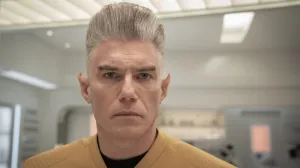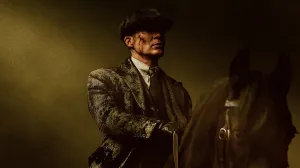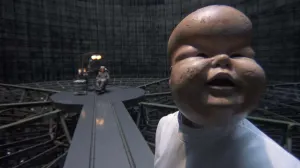When it premiered in 1993, Star Trek: Deep Space Nine was admittedly a huge gamble for the franchise. Instead of ‘boldly going’ to new worlds every week, the show stayed put, based on a stationary space station parked near a volatile wormhole. The cast was unlike anything Trek had tried before: a grieving widower in Benjamin Sisko, a former Bajoran freedom fighter in Kira Nerys, and a Ferengi bartender in Quark. This wasn’t a crew of bright-eyed explorers; these were survivors, soldiers, and outcasts. At first, fans were unsure. The show’s slower pace and more political storylines felt like a departure from the usually optimistic feel of The Original Series and The Next Generation. But as the years went on, DS9 proved itself to be ahead of its time. It embraced serialized storytelling before it was common on television, pushed Star Trek into the more morally grey territory fans have become used to today, and delivered some of the most powerful character-driven drama the franchise has seen.
Videos by ComicBook.com
Across seven seasons, DS9 evolved into a layered saga of religion, politics, and family. It became the most daring Trek series, unafraid to tackle issues of faith, inequality, and the cost of war. And at its heart was Captain Benjamin Sisko, played with commanding presence and emotional depth by Avery Brooks, who redefined what a Starfleet leader could be. Deep Space Nine may have started as the underdog of Star Trek, but in many ways, it became the heart of the franchise. Three decades after its debut, Deep Space Nine still feels ahead of its time. It wasn’t afraid to show that Starfleet officers could struggle with doubt, anger, or compromise. And it gave us one of the richest ensemble casts in science fiction, where even side characters became unforgettable.
What makes our chosen episodes endure isn’t just their action or spectacle — it’s the way they wrestle with questions that remain urgent today. From character studies to action-packed war epics, here are our picks for the top ten episodes that capture the very best of Deep Space Nine.
10) “Take Me Out to the Holosuite” (Season 7, Episode 4)
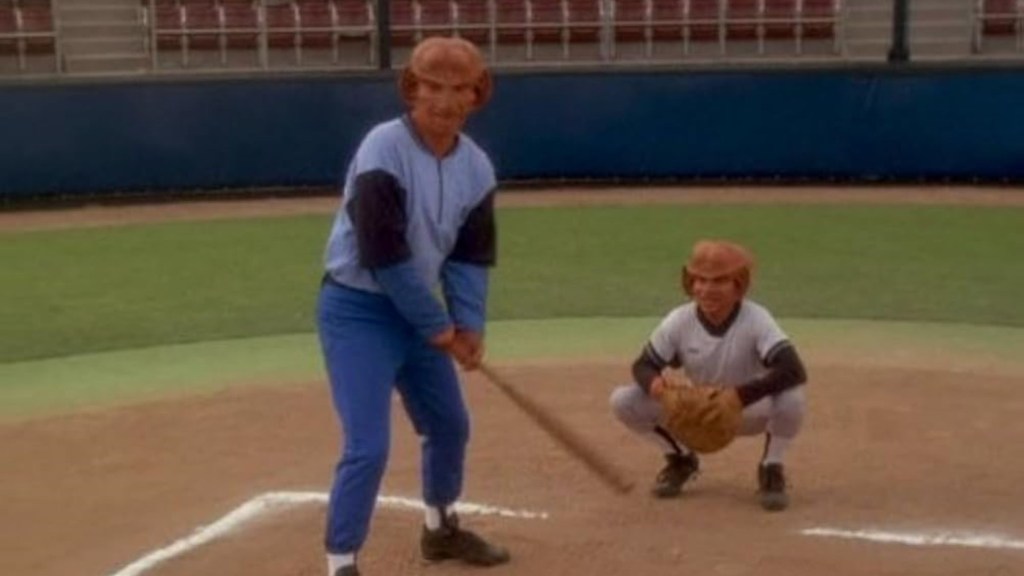
When you think about it, the Season 7 episode “Take Me Out to the Holosuite really shouldn’t work. At the height of the Dominion War, Sisko leads his crew into a bloody, fearsome… baseball… It seems slightly out of place for the Captain to encourage his crew to partake in the light recreation of a ball game of all things when there’s a war raging around them. But what could’ve easily felt like a tonal misstep instead becomes one of DS9’s most charming storylines. Facing off against arrogant Vulcan rivals, Sisko’s “Niners” stumble, bicker, and finally rally together to win the day!
The episode brings out a new playful side to the characters and a much-needed reprieve for both them and us as viewers. It’s not about victory in the war or even on the pitch — it’s about camaraderie, loyalty, and reminding us of why the characters are fighting in the first place – for this – for the freedom to play and laugh together and to protect their way of life. Plus, Worf’s misunderstanding of the line “Death to the opposition!” remains one of the funniest moments in Trek history.
9) “Improbable Cause” / “The Die Is Cast” (Season 3, Episodes 20–21)

This two-parter puts the spotlight on Elim Garak (Andrew Robinson), DS9’s enigmatic tinker-tailor-soldier-spy and one of Star Trek’s most compelling supporting characters. After an assassination attempt on Garak, Odo’s subsequent investigation pulls the two into a web of Cardassian and Romulan intrigue. What follows is one of Star Trek’s best political thrillers, complete with shocking betrayals and clandestine plots.
We begin to learn more about Garak’s true persona and what he is really capable of underneath the façade. That said, one of Star Trek’s most harrowing scenes where Garak is forced to torture Odo for information on the Changelings shows that the Cardassian still has a conscience. Andrew Robinson delivers a layered performance that shows Garak as both ruthless and strangely principled, cementing him as one of the franchise’s most complex characters.
8) “The Way of the Warrior” (Season 4, Episodes 1–2)
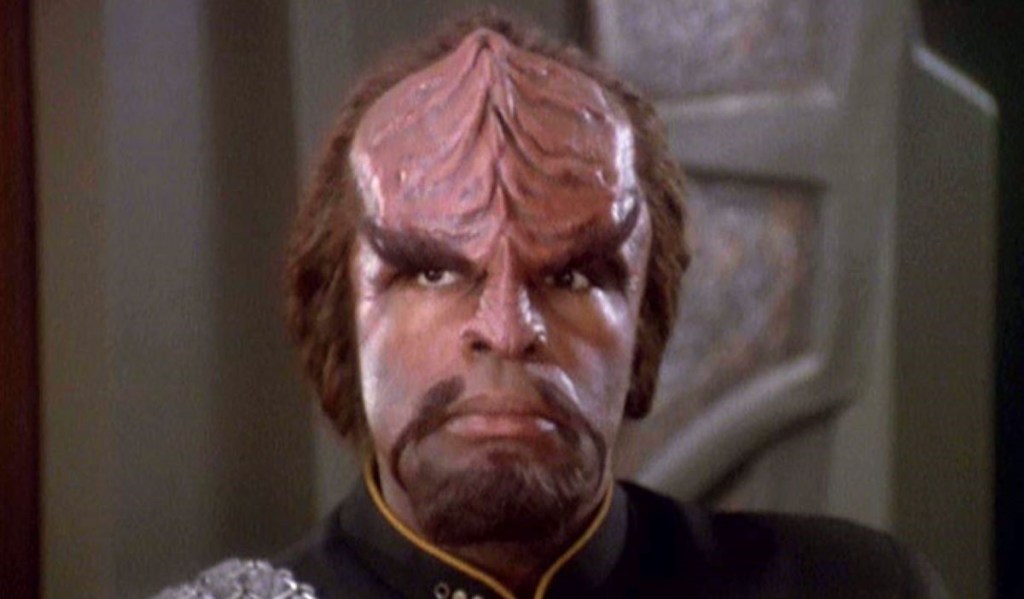
Looking to inject new energy into the series, DS9 introduced series 4 by bringing back everyone’s favourite Klingon Worf of The Next Generation as a regular cast member in this feature-length episode — and it worked a treat. When the Klingon Empire goes to war with Cardassia, Sisko finds himself navigating a volatile political crisis while Worf, seemingly more lost and at sea than he appeared on The Next Generation, struggles with his divided loyalties as both a Klingon and a Starfleet Officer.
What better way for Worf to find purpose than by using his unique position to help handle the Klingon crisis and stop it from escalating? The result is a Klingon action movie on television, complete with massive space battles, tense diplomacy, and a new status quo for the station. Many fans consider this DS9’s true turning point, as the show took the time to really explore the political workings of the Klingons, as paranoia runs rife and they begin to return to their violent tendencies.
7) “A Call to Arms” (Season 5, Episode 26)

It was the season finale that changed everything. When the Dominion and Cardassians seize control of DS9, Sisko and his crew are forced to abandon their home, and unlike other cliffhangers, which were usually swiftly resolved in the opening episode of the next series, this time it would take Sisko and the crew a full six episodes before they finally managed to retake the station. All hope really did appear to be lost, and it felt like one of Trek’s darkest hours. Worf and Jadzia get separated, and Odo and Rom stay behind, apparently defecting to serve their enemies.
The image of Gul Dukat gloating on the Promenade while Sisko leaves behind his beloved baseball is unforgettable. The episode marks DS9’s full embrace of wartime storytelling, setting the stage for the serialized arcs that would dominate the show’s final seasons. It’s one of the most effective cliffhangers in Trek history.
6) “Sacrifice of Angels” (Season 6, Episode 6)
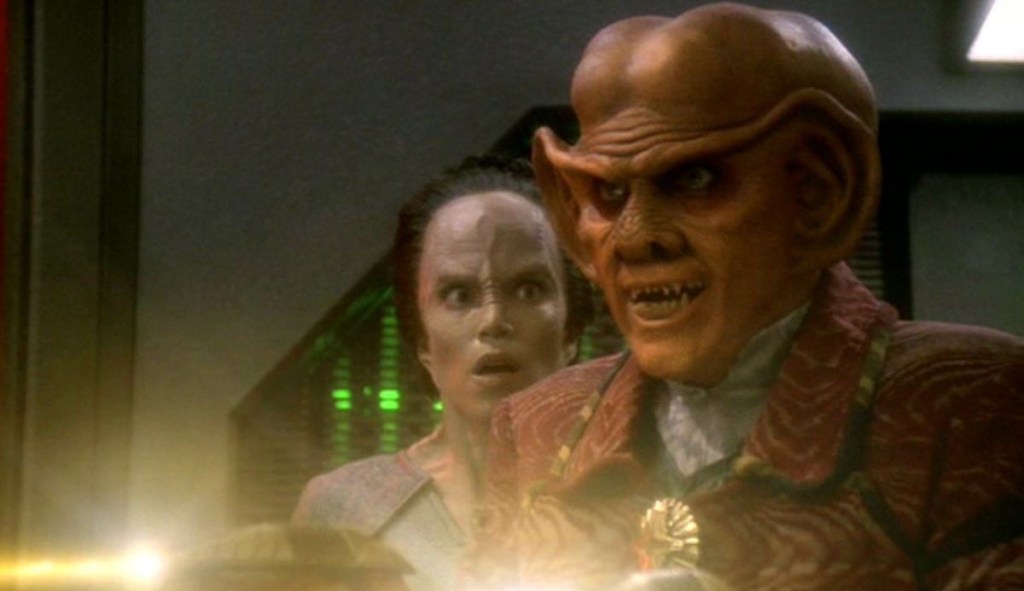
The climax of DS9’s six-episode “Occupation arc,” at the beginning of Season 6, which focused on the aftermath of the Cardassian’s take over of the station in “Call to Arms” “Sacrifice of Angels” is Sisko’s ‘Counter-punch’ to the Cardassian’s in the fight to get their home back, and it delivers one of the biggest space battles filmed for television in the 90s.
Sisko leads a desperate fleet to retake the station, and there’s some fantastic character development mixed in as he considers whether to play the card of his status as Bajoran Emissary to request celestial intervention in the war. The eventual victory is incredibly satisfying. It’s hard-won but bittersweet, capped by the tragic death of Dukat’s daughter Ziyal, who is killed for helping the resistance. “Sacrifice of Angels” perfectly illustrates DS9’s ability to balance spectacle with personal stakes.
5) “Trials and Tribble-ations” (Season 5, Episode 6)
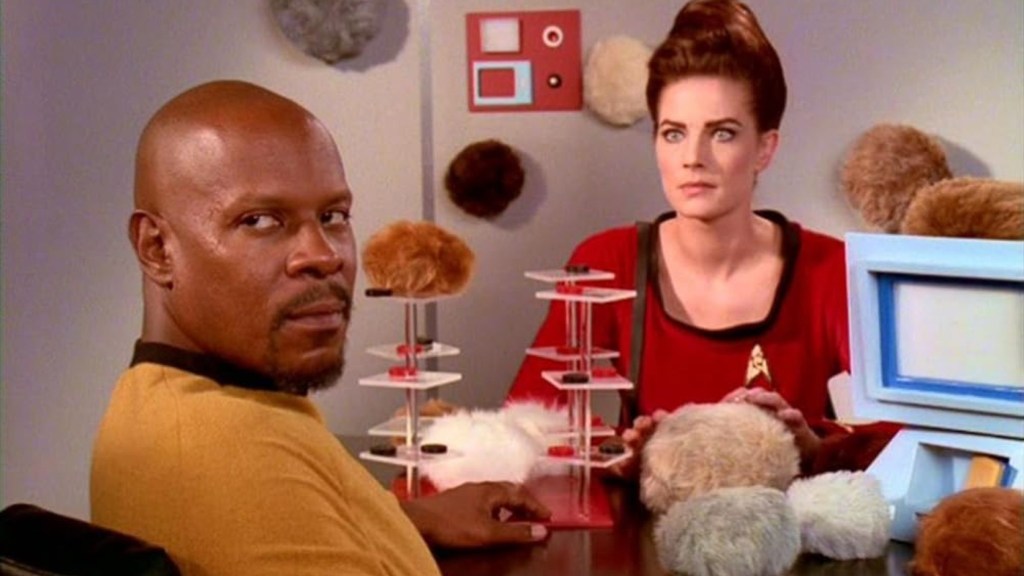
Created to celebrate Trek’s 30th anniversary, this time-travel romp sees Sisko and crew sent back to the events of the classic TOS episode “The Trouble With Tribbles.” The result is pure joy! The episode could easily have felt a little cheesy, what with the mismatch between the two shows. Deep Space Nine had a very different feel from the twinkling lights and kitschy colours of The Original Series.
But the clever visual effects, which still for the most part hold up today, seamlessly insert DS9 characters into the 1960s footage, and Sisko and crew look fantastic done up in The Original Series hairdos and costumes, and the jokes about Kirk and Spock are on point. Worf’s deadpan refusal to discuss the difference in Klingons’ looks between TOS and DS9 remains a fan-favorite gag. Beyond the laughs, the episode captures DS9’s respect for Trek’s past while proving it had very much carved out its own identity.
4) “Duet” (Season 1, Episode 19)

In early episodes of DS9, the show sometimes struggled to find its voice, but “Duet” was an episode that really showed the series’ potential. In echoes of one of The Original Series’ most popular episodes, “The Conscience of the King,” Kira Nyeris believes she has caught a Cardassian war criminal, only to discover the man is someone else entirely — one who has taken on the criminal’s identity out of guilt for his own complicity.
Interestingly, producers had originally intended Michelle Forbes to return to the role as Ro Laren from The Next Generation, but Nana Visitor shines as Kira, who, having fought in the Bajoran resistance, sometimes struggled to figure out how to live in peacetime. The episode confronts her hatred and her trauma from the Bajoran Occupation. It’s a searing morality play that established DS9’s willingness to tackle difficult political and ethical issues.
3) “The Visitor” (Season 4, Episode 2)

One of the most emotional episodes in all of Trek, the second episode of the fourth season of DS9 sees a freak accident leave Sisko displaced in time and only able to reconnect with his son Jake every few years. Given Sisko’s well-earned reputation as one of the best ‘space dads’ Star Trek has to offer and how important his son is to him, it’s a devastating episode and really gets to the heart of Sisko’s character.
Tony Todd delivers a heartbreaking performance as an older Jake, who grew up to be a writer and eventually sacrifices his own life to bring his father back. It’s a meditation on grief, legacy, and the bond between father and son that resonates far beyond the sci-fi premise. Few Trek stories have left viewers so moved.
2) “Far Beyond the Stars” (Season 6, Episode 13)
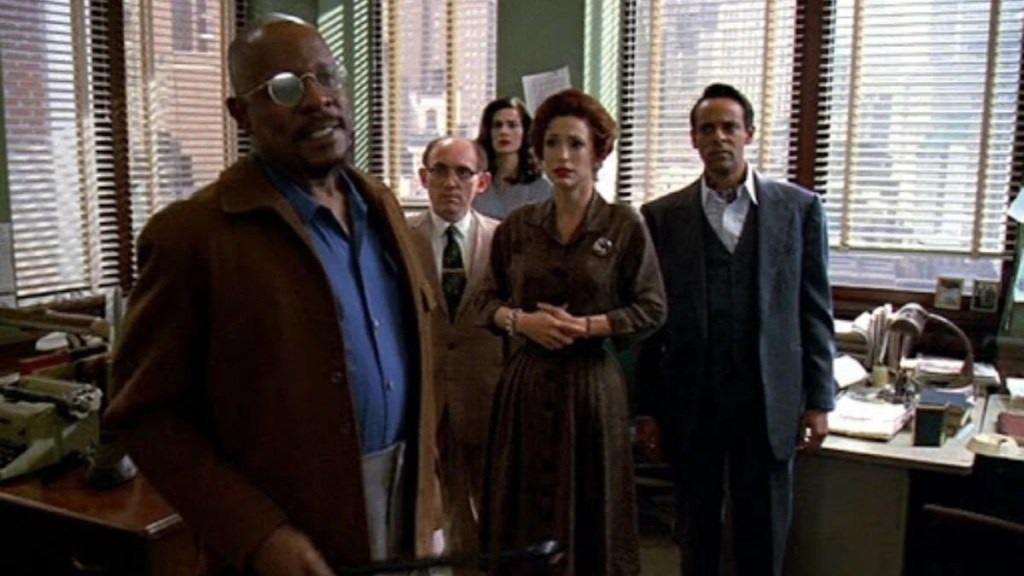
In this standout hour for Deep Space Nine, Sisko experiences life as Benny Russell, a Black sci-fi writer in 1950s America whose dream of telling stories about a space station captain is crushed by racism. Directed by Avery Brooks, the episode strips away the genre trappings to confront the prejudice in America at the time directly, reminding audiences why science fiction matters. In all of Trek, there has perhaps never been an episode that has more thoroughly encapsulated and engaged with the franchise’s core themes.
“Far Beyond the Stars” shows what Trek can achieve when it’s at its most self-reflective, It’s a very different kind of episode from the classic Trek adventure, with a different tone, but “Far Beyond the Stars” really hammers home Star Trek’s most important belief or ideology which is that by taking the complex social issues we face in the real world, and tackling them head-on on screen, science fiction can make the planet a better place. It’s one of the most profound hours of television Star Trek has ever produced, and a showcase for the entire cast.
1) “In the Pale Moonlight” (Season 6, Episode 19)

For many Trek fans, “In the Pale Moonlight is the quintessential DS9 episode — and arguably the best episode of Trek – period. Faced with impossible losses in the Dominion War, Sisko conspires with Garak to manipulate the Romulans into joining the fight, essentially committing criminal acts and becoming complicit in political assassination in the process. What follows is a descent into moral compromise, as lies, forgery, and murder weigh heavily on Sisko’s conscience.
Of all episodes dealing with The Dominion War, “In the Pale Moonlight” is probably the episode that best showcases how the storyline and Deep Space Nine as a whole deviated from and even challenged Roddenberry’s more optimistic vision, showcased in The Original Series. By forcing Sisko into moral gray areas, DS9 highlighted that the very survival of Roddenberry’s utopia depended on those willing to defend it at any cost. Avery Brooks delivers a riveting performance in his log confession. It’s a bold, unsettling masterpiece that defines DS9’s legacy.
Do you agree with our picks? Let us know in the comments!
All seven seasons of Star Trek: Deep Space Nine are streaming now on Paramount+.

